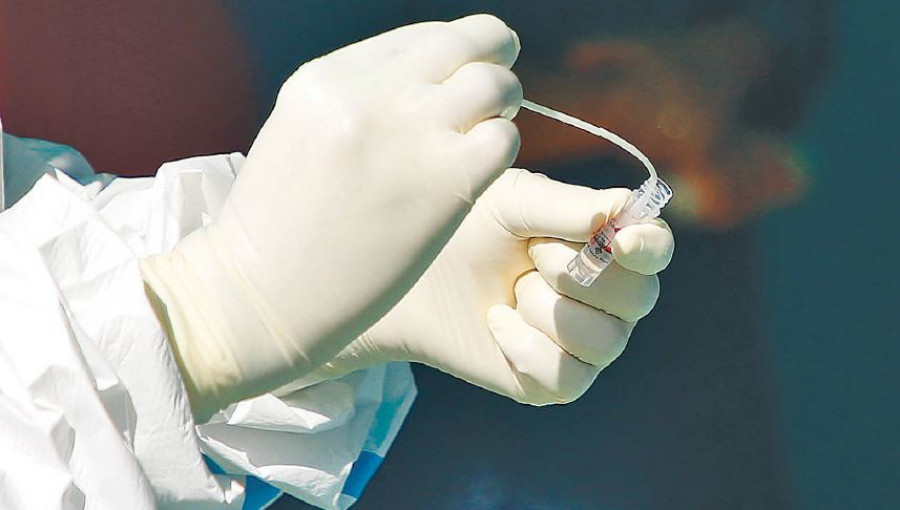Health
1.7 million antigen test kits sent to provinces
Everyone with Covid-19 symptoms and those who have come in close contact with the infected to be tested.
Arjun Poudel
Amid a rapid spread of Covid-19 infection in the rural areas and limited testing, the Ministry of Health and Population has rolled out 1.7 million antigen test kits throughout the country.
Officials said they plan to conduct around 25,000 antigen tests daily.
“We have already dispatched 1.7 million antigen test kits to the provinces,” Mahendra Prasad Shrestha, chief specialist at the Health Ministry, told the Post. “Tests will be performed at the village level. Everyone with Covid-19 symptoms and those who came in close contact with the infected will be tested.”
The government had decided to expand antigen-based testing after the country was hit hard by the second wave of infections. However, due to lack of testing kits, antigen tests were being conducted in just hundreds.
“Due to insufficient testing kits, we were not able to expand testing,” said Shrestha. “Now we have a sufficient number of testing kits, provided by international aid agencies.”
Authorities in Nepal have been performing around 20,000 polymerase chain reaction tests a day after the second wave of the pandemic hit the country. Officials say it is the maximum capacity of the laboratories operating throughout the country.
On Wednesday, 19,030 polymerase chain reaction tests and 322 antigen tests were performed throughout the country.
The result was 6,677 people tested positive on polymerase chain reaction tests and 37 positive on antigen tests.
The Health Ministry said that 145 people succumbed to the contagion, pushing total deaths to 6,845.
While active cases stand at 117,077 throughout the country. So far, 53,5525 people have tested positive.
There are 91 polymerase chain reaction test laboratories operating across the country.
Public health experts say that increasing testing is the first step towards containing the spread of the infection. They said that the existing daily test numbers are insufficient to contain the spread of infections.
“Without testing, authorities do not know about the scale of spread of virus in society, without knowing it contact-tracing cannot be started,” Dr Keshav Deuba, a public health epidemiologist, told the Post. “Neither the suspected people can be placed in quarantine nor could they be placed in isolation.”
Lack of sufficient testing is responsible for the current spike in new cases, doctors say.
After the Health Ministry enforced the Cabinet decision dated October 5 (last year) to make patients pay (except for the poor, single women, disabled, senior citizens above 70 years, frontline health workers, security personnel and cleaning staffers) for Covid-19 tests and treatment, state-run laboratories stopped free tests. Health workers assigned to carry out contact-tracing have stopped collecting specimens—nasal and throat swabs for polymerase chain reaction tests. Only the symptomatic individuals and those admitted in hospitals were tested until a month ago.
A cabinet meeting held on April 19 had decided to resume testing and contact tracing, the decision is yet to be implemented due to a lack of testing kits.
Since, authorities are not providing free testing, over 80 percent asymptomatic infected people, whose conditions are not severe are not tested, which is one of the reasons for the coronavirus to penetrate deep into society, doctors say.
Health workers serving in the districts say that the case positivity rate is very high especially among those residing in the villages and what is alarming is that most of the people having symptoms are not seeking tests.
They said that very few people are following the public health protocol and other measures required for containment are almost nil.
As the second wave gripped India, people returned home in their thousands, and cases continue to rise. They were allowed to go to their villages directly without having to spend time in quarantine in border areas like in the case of the first wave of the pandemic last year.
Local governments, which were active during the first wave of the pandemic, did not bother to place those returning to their villages in quarantine either.
Authorities in the Kathmandu Valley enforced prohibitory orders only after new cases started to spike. With two days’ notice given before prohibitory orders first came into force on 29 April many left Kathmandu for their villages.
“A lot of people are not getting tested and authorities are considering that the burden of infection is slowly declining, without knowing the actual conditions,” said Deuba, the public health epidemiologist. “Tests are essential for knowing the actual conditions. General public also becomes sensitized if they know the infection status and do not let their guard down.”
Increased testing also helps policymakers as it helps them assess the scale of infections and allocate resources accordingly.
“Burden of the infection may vary from place to place,” Dr Prabhat Adhikari, an infectious disease and critical care expert, told the Post. “When the authorities know the real burden, they can focus the measures and resources in the highly affected areas.”
Countries, which were aggressive in testing, contact-tracing, and isolating the infected, successfully stamped out the menace of the virus, doctors say. They said that early detection and isolation of the infected are the only ways to lessen the infection rate.
“Testing helps to figure out the hot spots and clusters,” said Adhikari. “As we have enforced the prohibition for about a month, authorities can loosen up the restrictions in the green zone and continue the restrictions in the hot zones.”
Doctors say when the spread of infection declines, few people will reach the hospital and few will require oxygen, isolation and ventilator support.
“Testing should not be considered expenditure, it is an investment, which saves lives and property,” said Dr Biraj Karmacharya, an epidemiologist, who is also the chief of the Department of Community Programme at Dhulikhel Hospital.




 14.12°C Kathmandu
14.12°C Kathmandu














